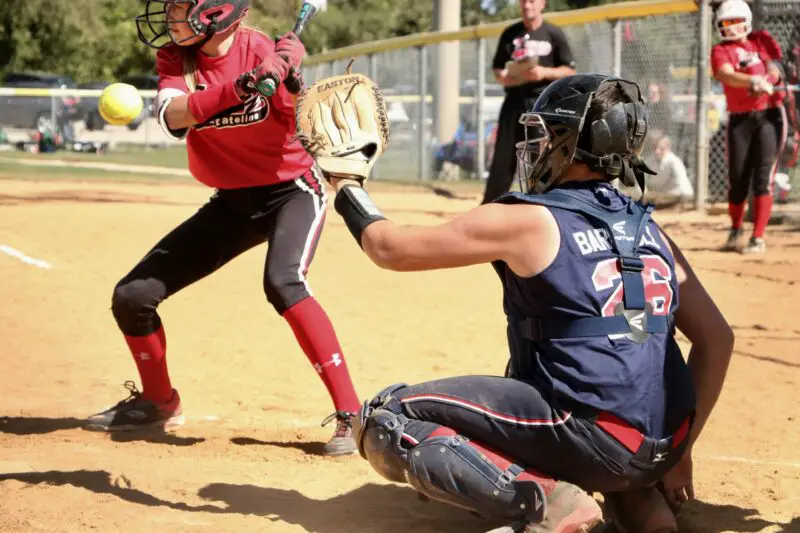
In order to be able to fully help your softball catchers, it is beneficial to have a thorough understanding of the skill from as many angles as possible. Following is what can referred to as a referent model or softball catching analysis that will give you some ideas on how to improve small specific pieces of the skill that need to be refined.
Softball Catching Analysis Considerations
The best way to analyze softball skills is with video analysis. The ability to slow the motion down and see specific movements by the player will allow you to not only take not of the refinements but also allows the player to see it as well. This will be useful in the development of kinesthetic awareness.
Technical / Tactical Skill Factors
We don’t always consider it but catching is a technical and tactical skill. How and when the player catches the ball will determine the ultimate success.
Some Technical Errors for Softball Catching
|
Technical Errors |
Improvement Strategies |
|
poor positioning |
use mirror drills |
|
poor throwing mechanics |
work individually |
|
not square to the pitch |
give signal early |
|
poor blocking mechanics |
practice specifically |
|
poor toss to the plate |
use a bucket to practice |
|
|
|
|
__________________________ |
__________________________ |
Some Tactical Errors for Softball Catching
|
Tactical Factors |
Improvement Strategies |
|
doesn’t know the plays |
read the team handbook |
|
inability to read the batter |
get educated, observe batters |
|
lack of experience |
get game / practice experience |
|
doesn’t know the signals |
make them simple |
|
__________________________ |
__________________________ |
Psychological Requirements
Softball is a game that has a lot of psychological barriers for athletes during competition. The psychology of catching requires skills that are going to have a
- Narrow Focus – watching the pitch to the glove / blocking
- Broad Focus – keeping an eye on the runner / runners
- Confidence – able to control a game and be vocal
- Concentration – not distracted by the batter or runners
- Emotional Control – not affected by environment (fans, etc.)
Some Psychological Challenges for Catching
|
Psychological Factors |
Improvement Strategies |
|
poor rapport with the pitcher |
work as teammates not friends |
|
distracted by environment |
cue words / self talk |
|
not focused on the batter |
have a game plan |
|
focusing on baserunners |
work on task at hand |
|
__________________________ |
__________________________ |
Physical Requirements
Softball is a power sport that requires the following biomotor skills:
- Coordination – transition
- Balance – transition
- Speed – transition
- Agility – blocking etc
- Power – transition
- Flexibility – throwing
- Aerobic Stamina – recovery / up and down
- Maximum Strength – throwing
Some Physical Challenges for Catching
|
Physical Factors |
Improvement Strategies |
|
stamina in the legs |
wall sits |
|
reaction time |
agility drills |
|
coordination (transition) |
timing drills |
|
strength (throwing) |
weight training / weighted balls |
|
__________________________ |
__________________________ |
Performance Outcome Factors
Every softball skills is executed with a desired outcome. That outcome however can be broken down just as the skill itself is. Here are some expected outcomes that you might have.
|
Expected Outcome |
Mechanics / Biomechanics |
|
receives the ball in strike zone |
good at framing |
|
throws out a runner if needed |
feet staggered ready to throw |
|
calls the right pitch |
weight slightly on back foot |
|
good toss on a passed ball |
good throwing mechanics |
|
knows where the runners are |
good transition to throwing |
|
__________________________ |
__________________________ |
Interventions
As coaches, error detection and correction is what we do. There is a time and a place however for that activity to occur. During competition is generally not the time. Following is a few recommended paths you can take to help your players improve their skills.
|
Intervention |
Timing |
|
Break down the skill |
During practice |
|
Kinesthetic feedback |
During practice |
|
Skill instruction |
During practice |
|
Provide a mentor |
During practice |
|
__________________________ |
__________________________ |

